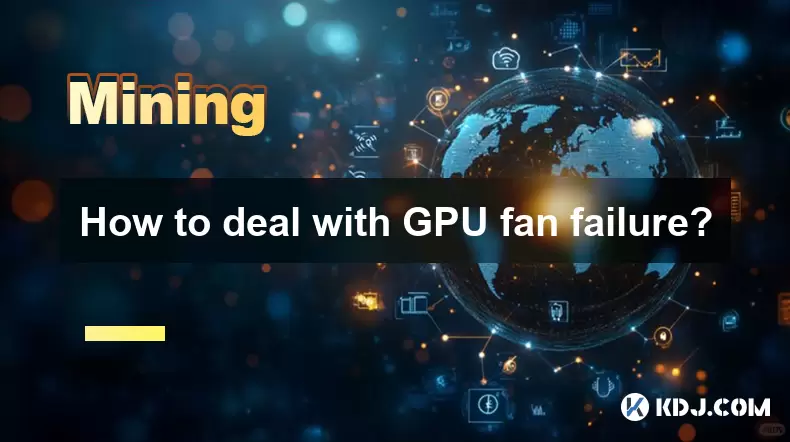-
 Bitcoin
Bitcoin $117,462.8204
-2.03% -
 Ethereum
Ethereum $3,061.1595
1.10% -
 XRP
XRP $2.9139
-2.19% -
 Tether USDt
Tether USDt $1.0002
0.02% -
 BNB
BNB $685.1357
-1.24% -
 Solana
Solana $161.3803
-2.11% -
 USDC
USDC $1.0002
0.04% -
 Dogecoin
Dogecoin $0.1948
-2.92% -
 TRON
TRON $0.2987
-0.89% -
 Cardano
Cardano $0.7330
-1.27% -
 Hyperliquid
Hyperliquid $47.7888
0.13% -
 Stellar
Stellar $0.4514
-2.93% -
 Sui
Sui $4.0169
2.74% -
 Chainlink
Chainlink $15.7088
-2.57% -
 Hedera
Hedera $0.2356
-3.33% -
 Bitcoin Cash
Bitcoin Cash $488.6656
-3.61% -
 Avalanche
Avalanche $21.2955
-1.47% -
 UNUS SED LEO
UNUS SED LEO $9.0415
0.42% -
 Shiba Inu
Shiba Inu $0.0...01332
-0.82% -
 Toncoin
Toncoin $3.0124
-0.62% -
 Litecoin
Litecoin $94.2175
-2.07% -
 Polkadot
Polkadot $4.0011
-0.61% -
 Monero
Monero $333.5714
-3.46% -
 Uniswap
Uniswap $9.1114
-1.56% -
 Dai
Dai $1.0000
0.02% -
 Ethena USDe
Ethena USDe $1.0005
0.00% -
 Bitget Token
Bitget Token $4.4951
1.87% -
 Pepe
Pepe $0.0...01242
0.47% -
 Aave
Aave $321.9943
0.51% -
 Bittensor
Bittensor $434.1984
5.13%
How to deal with GPU fan failure?
A failed GPU fan during cryptocurrency mining can lead to overheating, reduced performance, and potential hardware damage if not addressed promptly.
Jul 14, 2025 at 04:14 am

Understanding the Role of GPU Fans in Cryptocurrency Mining
GPU fans play a critical role in maintaining optimal temperatures for graphics cards, especially during cryptocurrency mining. Mining requires sustained high-performance computing, which generates significant heat. Without proper cooling, GPUs can suffer from thermal throttling or even permanent damage. When a GPU fan fails, it directly impacts the card's ability to dissipate heat efficiently, leading to potential performance degradation and hardware instability.
In mining rigs with multiple GPUs, the failure of a single fan may not immediately halt operations but can contribute to an increase in overall system temperature. This scenario makes early detection and resolution crucial for miners aiming to maintain uptime and profitability.
Early signs of a failing GPU fan include unusual noise, higher than normal operating temperatures, and unexpected shutdowns or reboots.
Diagnosing GPU Fan Issues
Before jumping into solutions, it’s important to accurately diagnose whether the fan is indeed faulty or if the issue lies elsewhere. Start by visually inspecting the fan blades for dust buildup, physical damage, or obstructions. Dust accumulation is a common cause of reduced airflow and can mimic the symptoms of a failed fan.
Use software tools like MSI Afterburner or EVGA Precision X1 to manually control fan speed and observe if the fan responds accordingly. If the fan doesn't spin at all or spins erratically despite being commanded to run, it's likely defective.
- Check BIOS settings to ensure fan control hasn't been disabled.
- Test the GPU in another system to rule out motherboard or power supply issues.
- Monitor temperatures using tools like HWMonitor to correlate fan behavior with thermal readings.
Temporary Measures to Prevent Overheating
When a GPU fan fails and immediate replacement isn’t possible, temporary measures can help prevent overheating while you source a new fan or plan repairs. These are not long-term solutions but can keep your mining rig operational until you resolve the issue permanently.
- Use external fans or cooling pads to direct airflow onto the affected GPU.
- Reduce mining intensity by lowering hashrate through mining software configuration.
- Increase case ventilation by removing side panels or adding additional case fans.
Always monitor temperatures closely when implementing temporary fixes to avoid pushing the GPU beyond safe thermal limits.
Replacing a Failed GPU Fan
If diagnostics confirm that the fan is non-functional or damaged beyond repair, replacing it becomes necessary. The process varies depending on the GPU model and manufacturer, but generally involves the following steps:
- Power down the system and unplug it.
- Ground yourself to prevent static discharge.
- Remove the GPU from the PCIe slot and open its casing.
- Disconnect the old fan from the PCB.
- Install the new fan, ensuring correct polarity and secure connections.
- Reassemble the GPU and test it under load.
Make sure to purchase a compatible fan—some manufacturers use proprietary connectors or blade designs. Researching your specific GPU model will help identify the correct replacement part.
Improper installation can lead to short circuits or improper cooling, so proceed with caution or seek professional assistance if unsure.
Preventive Maintenance for GPU Fans
Regular maintenance can significantly extend the lifespan of GPU fans and reduce the likelihood of sudden failures. Miners should incorporate routine checks and cleaning into their system management practices.
- Clean fans and heatsinks every 2–4 weeks using compressed air.
- Lubricate fan bearings if accessible and recommended by the manufacturer.
- Monitor fan speeds and temperatures daily using monitoring software.
- Keep the mining environment clean and free of excessive dust or humidity.
These preventive actions not only preserve fan functionality but also enhance overall system stability and efficiency.
A well-maintained GPU can operate reliably for years, minimizing downtime and maximizing mining output.
Frequently Asked Questions
Q: Can I continue mining with a GPU that has one failed fan?
A: Yes, but with caution. A single failed fan increases the risk of overheating. Monitor temperatures closely and consider reducing workload or improving external cooling until the fan is replaced.
Q: How much does it cost to replace a GPU fan?
A: Replacement costs vary based on the GPU model and where you purchase the part. Generic fans can range from $5 to $20, while branded or specialized replacements may cost more. Labor charges, if applicable, can add $20–$50.
Q: Is it safe to overclock a GPU with a fan issue?
A: No. Overclocking increases heat output. With a compromised cooling system, this can quickly lead to dangerous temperatures and potential hardware damage.
Q: Can software adjustments compensate for a failed GPU fan?
A: Software tools can help manage temperatures by adjusting fan curves or limiting performance, but they cannot fully compensate for a mechanical failure. Physical repair remains the best solution.
Disclaimer:info@kdj.com
The information provided is not trading advice. kdj.com does not assume any responsibility for any investments made based on the information provided in this article. Cryptocurrencies are highly volatile and it is highly recommended that you invest with caution after thorough research!
If you believe that the content used on this website infringes your copyright, please contact us immediately (info@kdj.com) and we will delete it promptly.
- Cantor Fitzgerald, Bitcoin, and SPAC Acquisitions: A New York Perspective
- 2025-07-16 10:30:12
- PoL v2 and BeraChain: Building a Stronger Blockchain Ecosystem
- 2025-07-16 10:30:12
- Bitcoin, Social Media, and FOMO: A New Yorker's Take on the Crypto Craze
- 2025-07-16 10:50:12
- GameStop, Bitcoin, and the Inflation Hedge: A New York Perspective
- 2025-07-16 08:30:12
- Tornado Cash on Trial: Privacy Tool or Money Laundering Machine?
- 2025-07-16 10:50:12
- Solana Memecoins Hit the Big Time: PUMP and Sonic Get Coinbase Listing Boost!
- 2025-07-16 06:50:12
Related knowledge

How are crypto mining profits taxed?
Jul 14,2025 at 12:28am
Understanding Cryptocurrency Mining and TaxationCryptocurrency mining involves validating transactions on a blockchain network and earning rewards in ...

How to keep a mining rig cool
Jul 12,2025 at 01:42pm
Understanding the Importance of Cooling in Mining RigsCryptocurrency mining is an intensive process that places heavy demand on hardware components, p...

How to set up a crypto miner
Jul 16,2025 at 09:14am
Understanding Ethereum Gas Fees: What Are They and How Do They Work?Ethereum gas fees are a fundamental aspect of the network, representing the cost r...

Can you mine crypto on a laptop?
Jul 16,2025 at 02:21am
Is It Feasible to Mine Cryptocurrency on a Laptop?Mining cryptocurrency on a laptop is technically possible, but feasibility depends heavily on the ha...

Is crypto mining worth it?
Jul 16,2025 at 01:21am
Understanding the Basics of Crypto MiningCrypto mining refers to the process of validating transactions on a blockchain network by solving complex mat...

How much does it cost to start crypto mining?
Jul 13,2025 at 12:22am
Understanding the Basic Costs of Crypto MiningStarting crypto mining involves several upfront and ongoing expenses. The primary costs include hardware...

How are crypto mining profits taxed?
Jul 14,2025 at 12:28am
Understanding Cryptocurrency Mining and TaxationCryptocurrency mining involves validating transactions on a blockchain network and earning rewards in ...

How to keep a mining rig cool
Jul 12,2025 at 01:42pm
Understanding the Importance of Cooling in Mining RigsCryptocurrency mining is an intensive process that places heavy demand on hardware components, p...

How to set up a crypto miner
Jul 16,2025 at 09:14am
Understanding Ethereum Gas Fees: What Are They and How Do They Work?Ethereum gas fees are a fundamental aspect of the network, representing the cost r...

Can you mine crypto on a laptop?
Jul 16,2025 at 02:21am
Is It Feasible to Mine Cryptocurrency on a Laptop?Mining cryptocurrency on a laptop is technically possible, but feasibility depends heavily on the ha...

Is crypto mining worth it?
Jul 16,2025 at 01:21am
Understanding the Basics of Crypto MiningCrypto mining refers to the process of validating transactions on a blockchain network by solving complex mat...

How much does it cost to start crypto mining?
Jul 13,2025 at 12:22am
Understanding the Basic Costs of Crypto MiningStarting crypto mining involves several upfront and ongoing expenses. The primary costs include hardware...
See all articles

























































































